Jeanne and Rex Sinquefield Music Middle // BNIM
Text description provided by the architects.
The Jeanne and Rex Sinquefield Music Center unites the School of Music within one welcoming, state-of-the-art facility that renews the program’s culture and identity on the University of Missouri – Columbia campus. Students previously attended classes in a series of acoustically inadequate buildings scattered across campus and needed a facility that would better support and strengthen their premier collegiate music program.
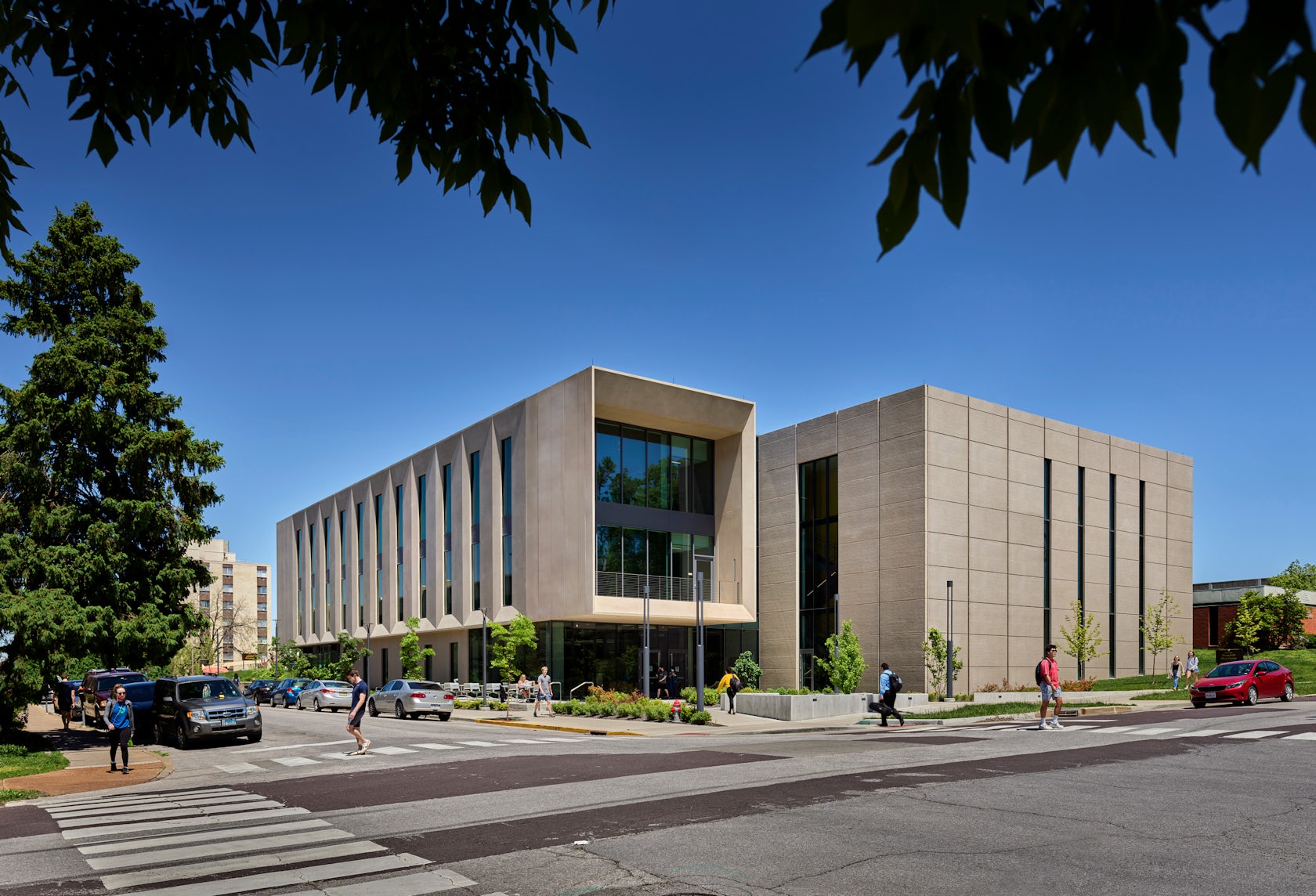
© BNIM
The new facility enhances opportunities for engagement, program growth, and student connection as part of a dynamic cultural corridor located on the northern edge of campus. Immersed in the activity of the University community within downtown Columbia, the facility engages with students and the community through two large entry plazas that dual as external performance venues and impromptu classrooms.

© BNIM
Windows along the ground level of the building also provide a glimpse into the percussion practice rooms. This design allows the building itself to become an instrument and music to extend into the campus.
The design is shaped by the primary goal of enhancing the human experience, both by providing acoustically advanced facilities that increase functionality and by creating inspiring, comfortable spaces which promote creativity and well-being.
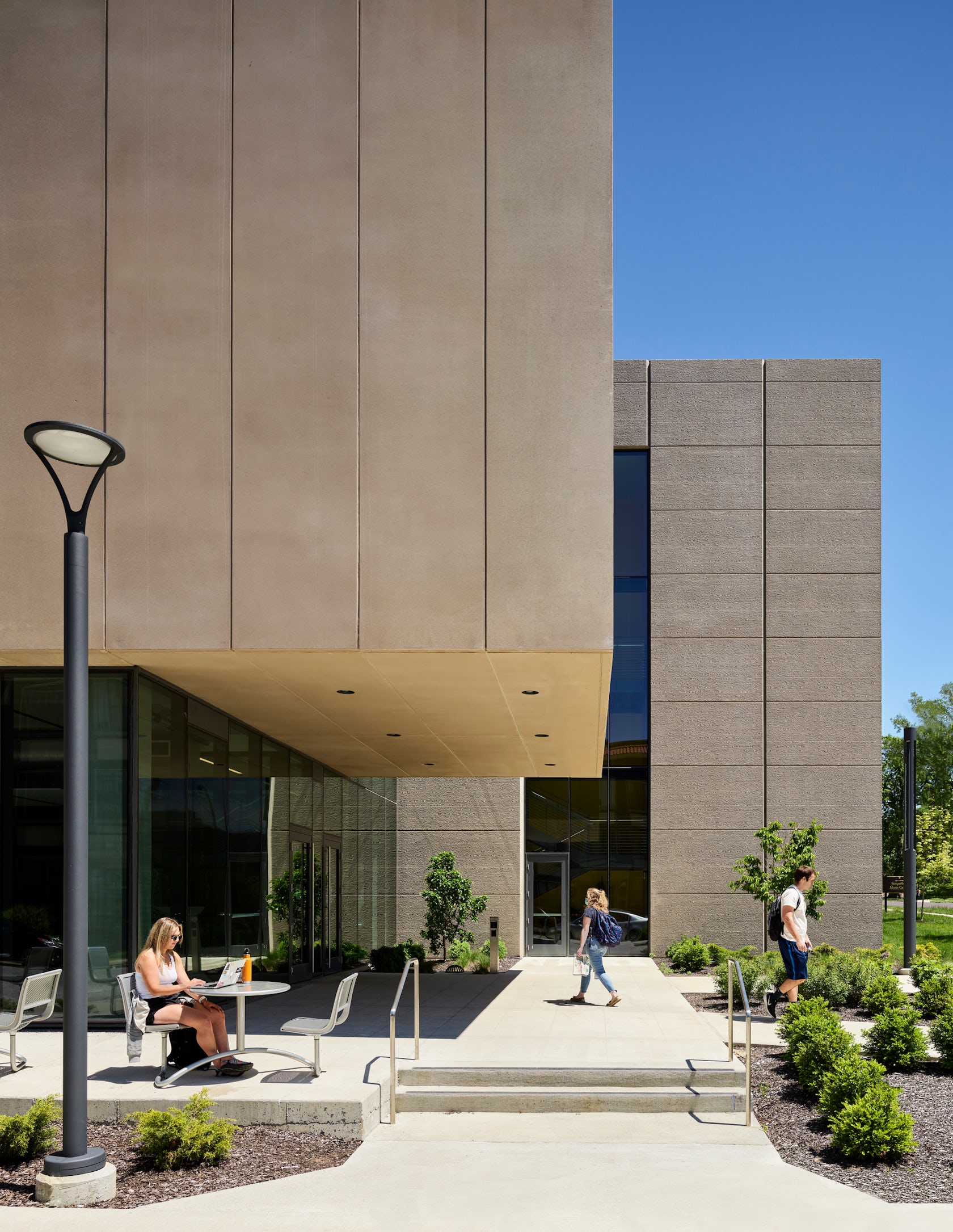
© BNIM
The new facility enables students to learn, practice, and perform in a strong acoustical atmosphere that supports the composition, instrumental, vocal, and editing and recording curricula. The building’s program is laid out in a simple, yet incredibly thoughtful way to provide cost-effective solutions for acoustically isolated spaces. Resembling a series of ‘boxes’ slightly pulled apart, the design focuses on establishing distance between practice and performance spaces and situating the most acoustically sensitive spaces on the ground floor of the building to reduce the carrying of sound and vibrations to other areas.
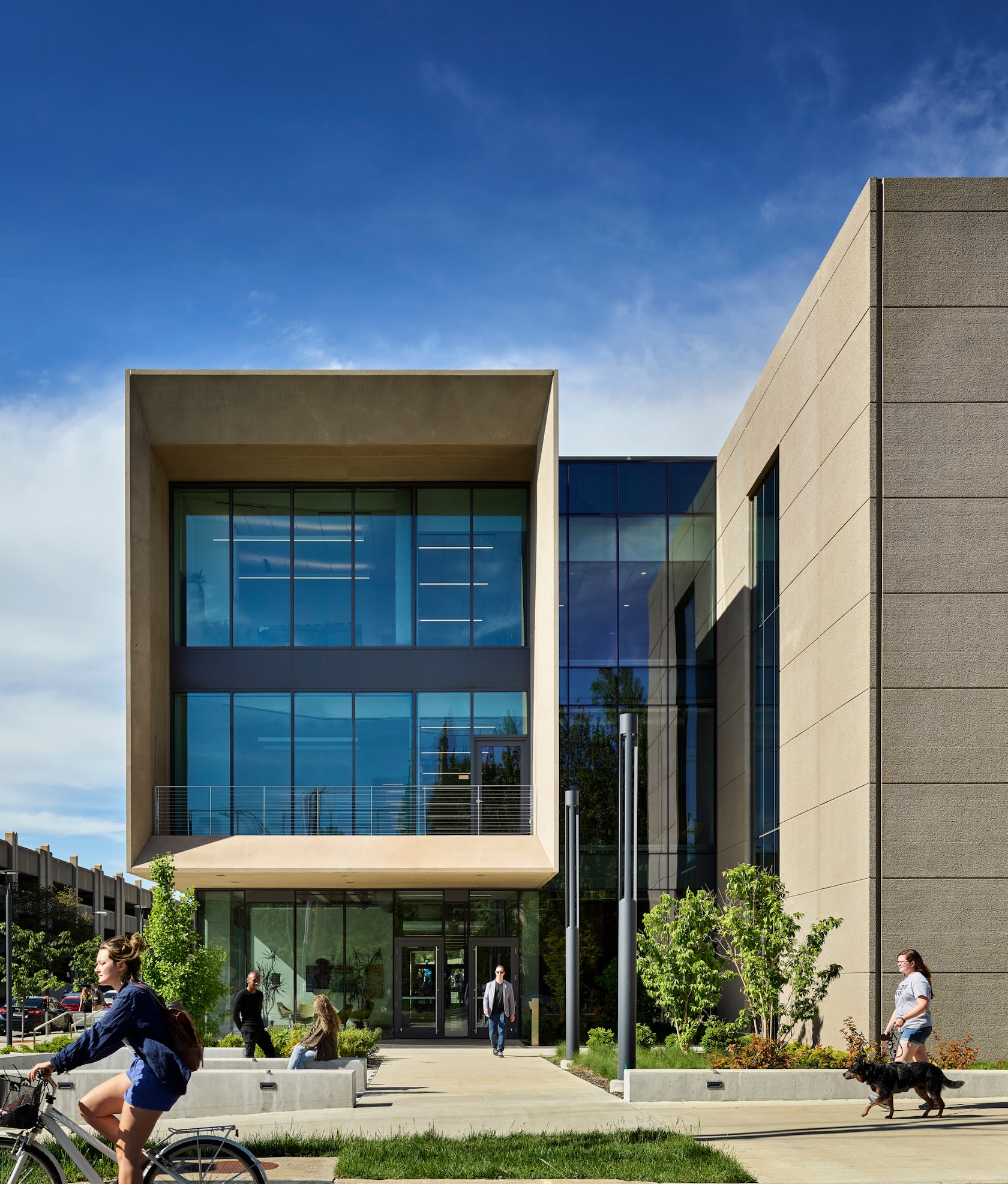
© BNIM
These effective strategies allowed the design to provide acoustic isolation without the need for additional extensive acoustical systems.
Often, music schools have a series of practice rooms and rehearsal spaces that cater to a single individual or small groups of people and, as a result, can cause facilities to turn inward, lacking access to natural daylight and views that are essential for health and wellness.

© BNIM
To address this issue, the design team situated the building’s corridors, which serve as connective ancillary spaces, to include large windows to provide a sense of relief and a connection back to nature while orienting users throughout the building with a series of daylight vistas.
The practice and performance spaces of the Jeanne and Rex Sinquefield Music Center share a beautiful atmosphere with wood paneling and an abundance of daylight.

© BNIM
Practice spaces allow for flexibility to adapt to emerging trends and different musical compositions and provide innovative acoustically isolated areas for all rehearsals, recordings, and performances. The facility’s large instrumental rehearsal room and traditional choral rehearsal room are elegant performance spaces that are ‘tunable’ to different types of music being performed.

© BNIM
They provide a substantial volume for acoustics and are outfitted with the ability to record and stream performances to physical or virtual live audiences. To create ‘tunable’ rooms, the design team worked with the project’s acoustician on a series of operable acoustic drapes that can be deployed or retracted depending on preferences of the musicians.

© BNIM
This cost-effective strategy provided acoustically advanced spaces while also allowing the School of Music the greatest amount of flexibility to accommodate program needs as curriculum continues to evolve in the future.
Design for future flexibility is further demonstrated in the traditional performance rehearsal space which not only utilizes the retractable draperies to either enliven or deaden the room based on the performance, but also includes a floor plan designed such that the room can be morphed for a series of different purposes.

© BNIM
The flat floor in the space was enlarged from a typical choral rehearsal room to allow the space to be flipped and risers to be utilized for patrons to view opera rehearsal or other individual or group performances. The custom woodworking on the room’s the south wall also includes concealed white boards to be utilized in a classroom format when not occupied by performances.

© BNIM
Operable wood walls fold out to create a band shell-like form that meets directional requirements for performances of various scales to audiences.
The Jeanne and Rex Sinquefield Music Center represents the first phase of a larger building master plan envisioned for the site. The Sinquefield Music Center is designed to respond to its surrounding urban and campus contexts.
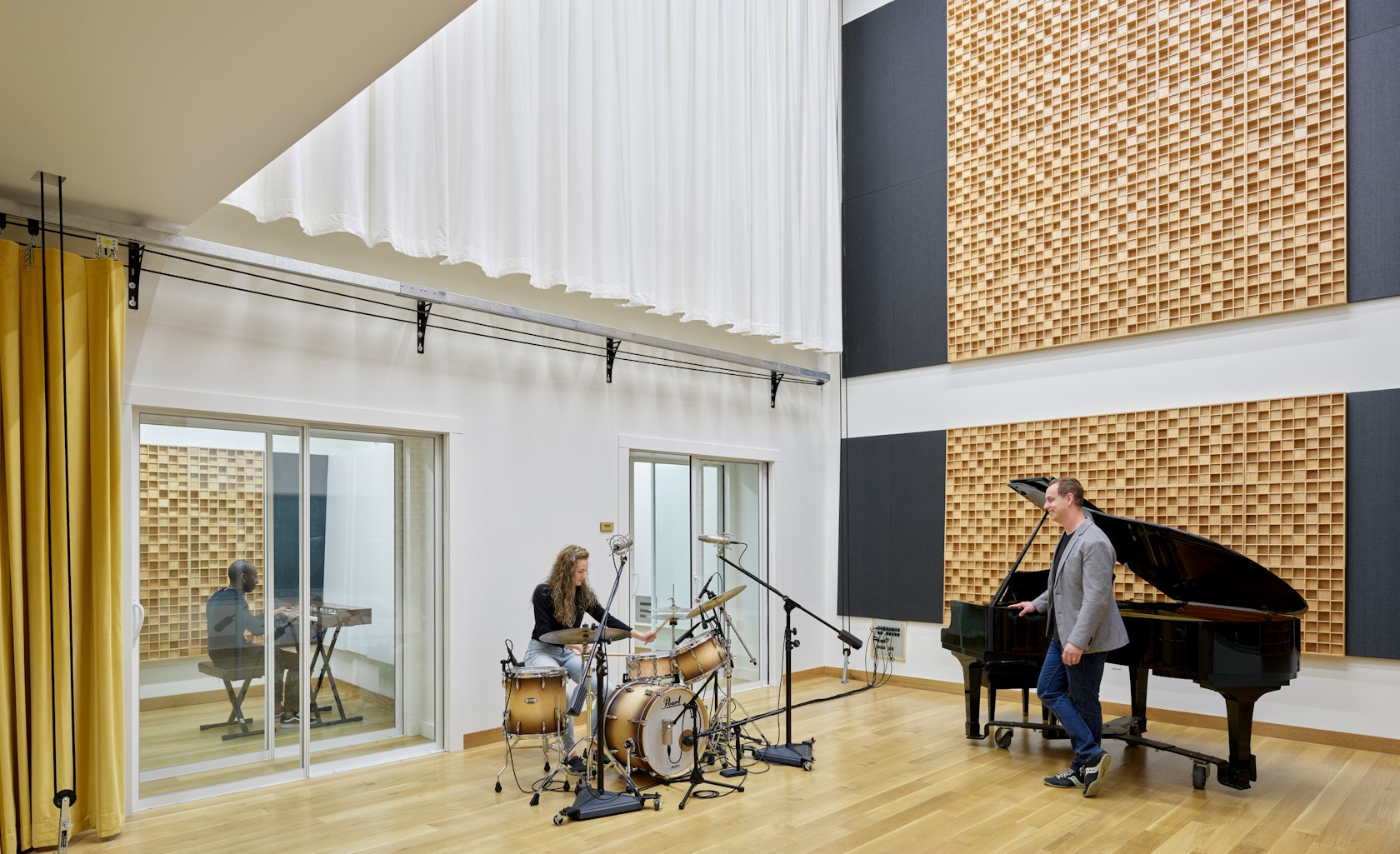
© BNIM
Located at the corner of Hitt Street and University Avenue, the building sits at the frequently traveled northern edge of the campus, providing a unique and valuable opportunity to spur the development of this cultural corridor, connecting the University of Missouri with downtown Columbia. Utilizing campus infrastructure, the new facility promotes density and walkability, as staples of sustainable design.

© BNIM
Additionally, the design team worked with consultant team members and the University to provide sustainable resources, materials, and products. .
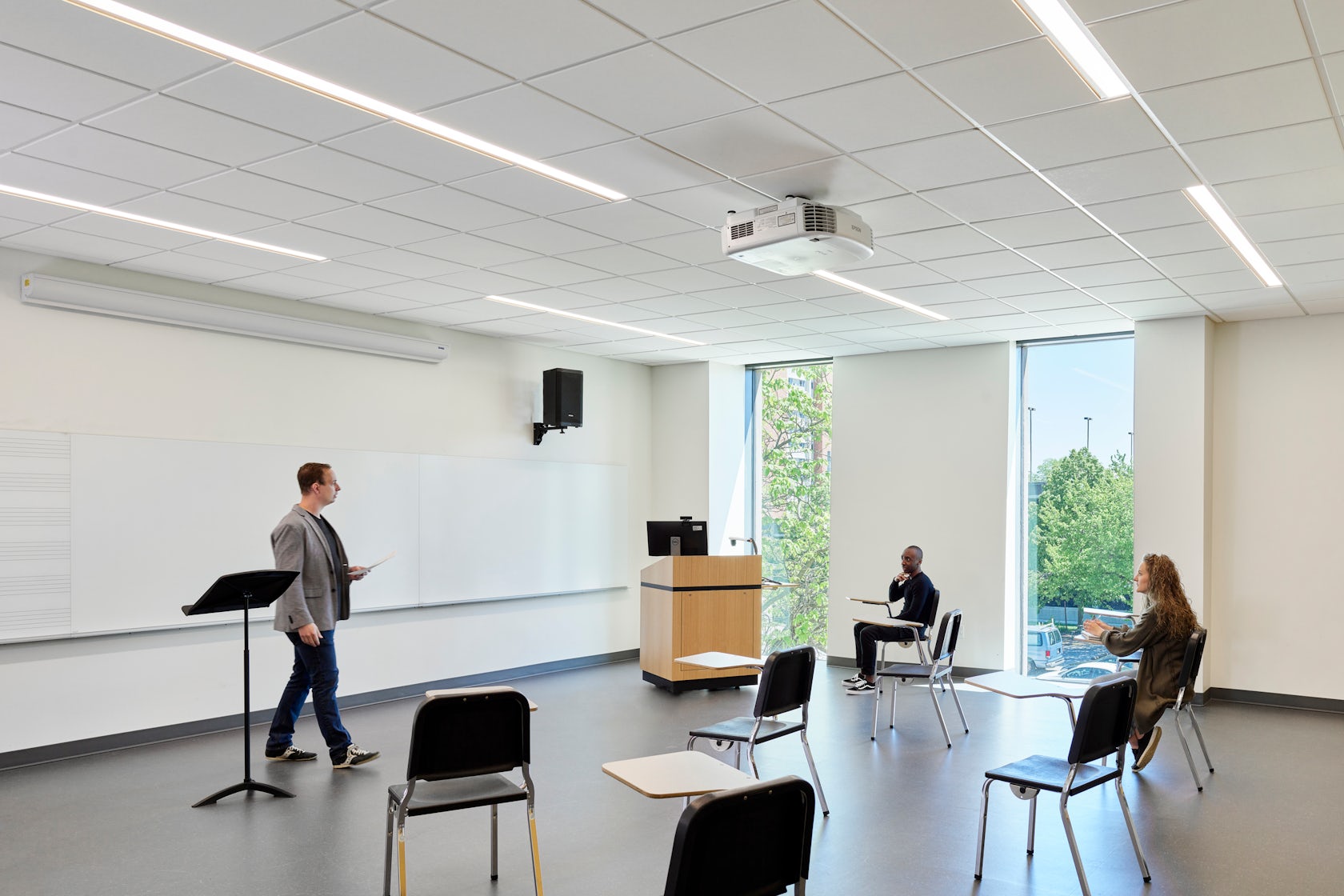
© BNIM



